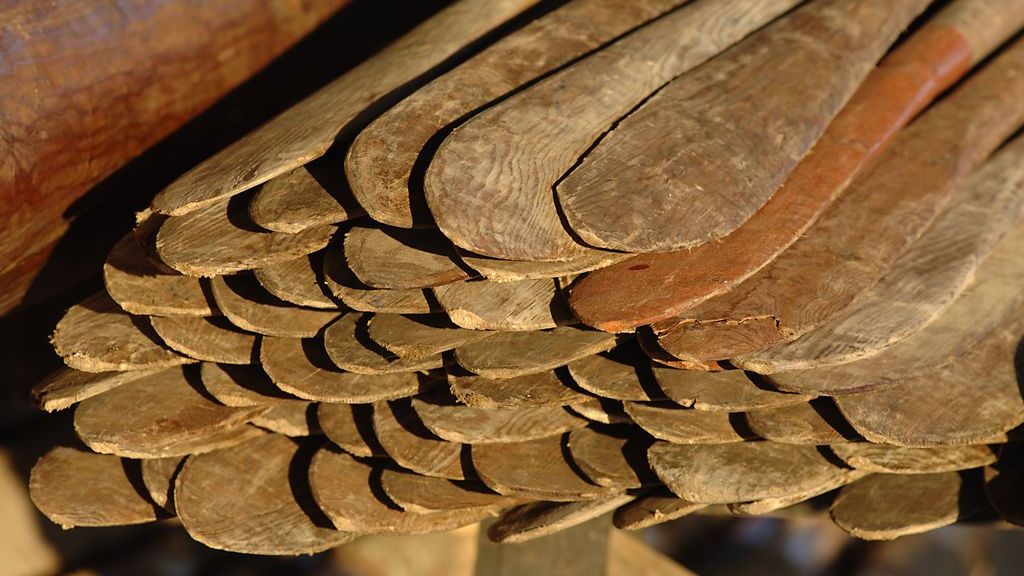Foreword to the book: 'Viking and Iron Age expanded boats'
by Tinna Damgård-Sørensen, Director and Søren Nielsen, Head of Maritime Crafts and Reconstruction, the Viking Ship Museum in Roskilde, Denmark
The day when Scandinavian boatbuilders began to expand their logboats for the first time must have been a magical one. Throughout the preceding millennia of boatbuilding, the size of the log had set the limit for how large a boat could be. However, boatbuilders gradually found out how to expand the thin sides of the hollowed-out logs using fire, water and heat, so that the boat could be wider than the tree’s diameter. As time went by, the height of the boat’s sides was increased with planks and the bottom reinforced with frames. In its appearance and sailing capabilities, the boat came to resemble the clinker-built keel and plank boats, which are also known from the Viking Age.
As can be read in this book, the expanded logboats were, perhaps, the starting point for the traditional, Nordic clinker-building tradition, which still persists in many parts of the North. One such place is the Faroe Islands, where one of the book’s authors, Hanus Jensen, served his apprenticeship as a traditional boatbuilder.
The book’s other author, Dr.phil.h.c. Ole Crumlin-Pedersen, utilises his vast expertise in maritime archaeology to present an overview of the archaeological finds of expanded logboats.
For decades, both authors have worked with experimental archaeology, each from their own standpoint. Their enthusiasm for boatbuilding, archaeology and experimental archaeology shone clearly through during the project, as it also does here in the book. The authors’ different areas of expertise are precisely what give the book its strength. It is in the interplay between the academic’s archaeological insight and the boatbuilder’s understanding and description of a craft many thousands of years old, that the book makes a significant contribution to research on the topic.
The Viking Age is often seen as the period with the large, beautiful clinker-built ships, with iconic, sweeping stems and square sails. With the construction of the longship, Sea Stallion from Glendalough, the Viking Ship Museum has also contributed to reinforcing this perception. However, there were also – and perhaps in much greater numbers – smaller boat-types. The reconstruction of three expanded logboats, one of which dates to the Viking Age, was partly set in motion in order to create a more nuanced image of the types of vessels that were built and used during the Viking Age.
At the Viking Ship Museum, we have spent many years reconstructing clinker-built Viking ships after thorough studies of their hull form in 1:10 scale models. However, the aim with this project was not to achieve the exact same length, breadth and depth measurements as on the original boat-finds. The aim was to explore and identify the rules of thumb that provided the foundation for the construction of expanded logboats. During our archaeological experiment, would it be possible to discover the ground rules for how the log should be hollowed out before expansion in order to create the beautiful, harmonious boat we could see in the archaeological material?
After building the three boats, Hanus Jensen offers an interpretation of what these rules of thumb could be. The project has also opened our eyes as to the high level of craft skill that was required to build expanded logboats. Boats which most likely provided the foundation for the impressive boatbuilding craft of the Viking Age, which found its strongest form of expression in the large clinker-built, sailing vessels we call Viking ships.
Thanks to Dronning Margrethe II’s Arkæologiske Fond and Letterstedtska Föreningen for their generous support for this book – to the reader, we hope you will enjoy it.
![[Translate to english:] Boden 'Udspændte både fra vikingetid og jernalder er udkommet på Vikingeskibsmuseets forlag- Bogen kan købes i Museumsbutikken og i vores webshop.](/frontend/_processed_/4/9/csm_www_cover_udst-baade_DK_nyhed_502ea0cdc2.jpg)


